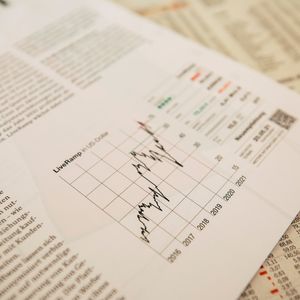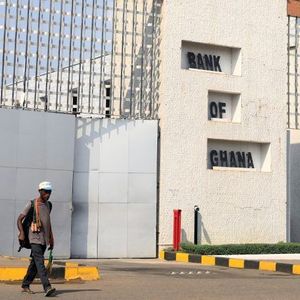

Bitcoin: At A Crossroad With A Negatively Skewed Risk/Reward Ratio
Summary The recent pullback in Bitcoin's price could be due to tight monetary policy or deteriorating macro conditions. If Bitcoin loses support near current levels, it could move back into the 30,000-50,000 USD range. Past halving cycles suggest Bitcoin should perform well over the next 12 months, but a sustained upward move will require a supportive macro backdrop and increased demand. I believe a sustained bull market will likely require a recession followed by a loosening of monetary policy. Bitcoin ( BTC-USD ) has trended down in recent weeks and is at risk of losing support. As an asset exhibiting a high degree of momentum, I think there is still significant downside risk from current levels. While only fairly modest in magnitude, Bitcoin's recent decline places it a crossroad as further declines could see it move back into the 30,000-50,000 USD range. The pullback could be considered surprising given the strength of equity markets and the support that ETF flows and the halving are potentially providing. Bitcoin is possibly being negatively impacted by liquidity though and may also be a canary in the coal mine for risk assets given mounting macro weakness. The economy appears to be slowly moving towards a recession, which I believe would be extremely negative for Bitcoin, at least initially, before central banks begin to flood the market with liquidity. Halving Bitcoin’s price action in the lead up to the most recent halving has been in line with previous halvings. Based on past events, the expectation would be that in the next 6 months Bitcoin’s price begins to increase sharply, moving towards approximately 200,000 USD. The halving cannot be viewed in isolation though and I don’t believe a small change to new supply can affect this type of change. I tend to think if halvings have any real impact, it involves catalyzing an increase in demand, which results in a positive feedback loop between price and demand. Figure 1: Bitcoin Price Around Halvings (source: Created by author using data from Yahoo Finance) Internet search data doesn’t suggest that this type of behavior is occurring at the moment. If anything, demand already appears to have peaked, meaning that Bitcoin’s price may have further to fall. Figure 2: "Bitcoin" Search Interest (source: Created by author using data from Google Trends and Yahoo Finance) ETF Flows The launch of Bitcoin ETFs has probably opened up demand somewhat, with ETF flows an important driver of price at the moment. ETF inflows have fallen off in recent weeks, but Bitcoin’s price appears to have led this move. Figure 3: Bitcoin ETF Flows (source: Created by author using data from Yahoo Finance) Financial Conditions Monetary policy is also an important determinant of Bitcoin’s price, although the relationship is non-linear and dynamic. While the flood of liquidity at the start of the pandemic was probably an important driver of Bitcoin’s price run in late 2020 and early 2021, there appears to be little relationship at the moment. If the Fed continues to drain liquidity from the system, this will likely begin to have a negative impact on Bitcoin at some point. Figure 4: Central Bank Liquidity (source: Created by author using data from the Federal Reserve and Yahoo Finance) Bitcoin’s recent price run also appears abnormal in light of current interest rates. Bitcoin’s price hasn’t exhibited a strong relationship with interest rates in the past. Past bull runs may have been initiated by real rates falling below zero though, ending when real rates moved towards positive territory again. From a theoretical perspective, higher rates increase the opportunity cost of money and should make Bitcoin less appealing. Figure 5: Fed Funds Rate (source: Created by author using data from the Federal Reserve and Yahoo Finance) A sustained Bitcoin bull market requires loose financial conditions and euphoric markets. The Fed's National Financial Conditions index suggests loose conditions, but this is more an indicator of stress in financial markets than monetary policy. Monetary policy is reasonably tight at the moment even though there is little stress in most markets. This could rapidly change if economic conditions deteriorate though. Figure 6: Financial Conditions Index (Source: Created by author using data from The Federal Reserve and Yahoo Finance) Bitcoin is a risk on asset, and it is this perspective that provides the most insight into Bitcoin's returns in recent years. The question at this point is whether the Bitcoin bull run is over and is leading equity markets, or whether Bitcoin will bounce back and continue moving up alongside equities Figure 7: Nasdaq 100 Index (source: Created by author using data from Yahoo Finance) While equity markets are currently quite strong, it should be noted that there is little breadth. Some of this is the result of fundamentals but the valuations of many large cap stocks (particularly tech stocks) have become frothy. This can be seen from the performance of the S&P500 index versus an equal weight equivalent. The current extreme outperformance by large caps is typically only seen during large drawdowns. Economic conditions are deteriorating, and many businesses are struggling at the moment. This situation will not persist indefinitely. Either business conditions will improve, along with breadth in equity markets, or many large cap stocks will correct significantly. Figure 8: S&P 500 / S&P 500 Equal Weight Index Ratio (source: Created by author using data from Yahoo Finance) Conclusion Based on past halving cycles, Bitcoin should be expected to perform well over the next 12 months. A sustained upward move from current levels will require a supportive macro backdrop and a positive feedback loop between price and demand though, neither of which appears likely at the moment. A recession followed by loose monetary policy is the most likely path to a sustained Bitcoin bull market. This would probably involve a significant price decline before Bitcoin rebounds though. The risk to a post-recession rebound would be if inflation remains elevated. In this case, the policy response may be weighted towards fiscal stimulus, which would not be as beneficial for Bitcoin













